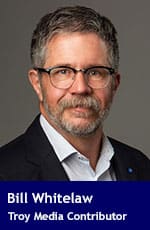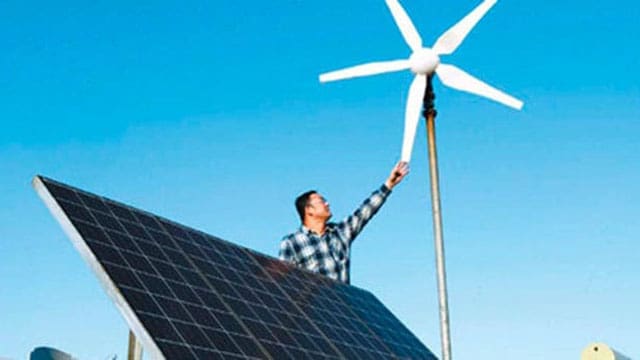Charting Alberta’s energy transition destiny
 Living in what I’ve whimsically dubbed “M&M-ville” holds the promise of a groundbreaking energy paradigm for rural Alberta. Nestled about 45 minutes southwest of Calgary along Highway 543, this imaginary locale embodies the dynamic interplay between traditional petroleum industries and innovative renewable energy ventures.
Living in what I’ve whimsically dubbed “M&M-ville” holds the promise of a groundbreaking energy paradigm for rural Alberta. Nestled about 45 minutes southwest of Calgary along Highway 543, this imaginary locale embodies the dynamic interplay between traditional petroleum industries and innovative renewable energy ventures.
“M&M-ville” is my imaginary descriptor for the community of “Molecules and Megawatts” – a notional place which (seemingly) embodies the contemporary energy dynamics and opportunities which characterize so much of rural Alberta. Indeed, with all the talk about energy corridors these days, here’s one right under our noses – a place that, if we get our act(s) together, could be a blueprint for “integration-not-isolation” of diverse and even seemingly disparate energy systems.
Picture pumpjacks and natural gas wellheads symbolizing our energy past and present at one end of the highway, while at the other, envision projects harnessing solar, waste recovery, and storage technologies for a sustainable future.
My little piece of heaven is somewhere near smack dab in the middle – a space where I can peacefully contemplate Alberta’s energy past, present, and future, figuratively and literally. In my mind, there’s an aspirational framework in which different energy systems coexist, collaborate with, and complement each other in a way that foregrounds economic strength and environmental integrity. In this world, petroleum has a place, but so do solar, wind, storage, and biomass forms of energy. And storage. Storage is critical.
Unfortunately, instead of fostering unity, our leaders seem intent on fostering division, jeopardizing Alberta’s potential as a leading energy hub.
Recent governmental actions, such as the Alberta Utilities Commission’s report contradicting renewable energy skepticism and the imposition of buffer zones stifling new development, illustrate this shortsighted approach. Even my idyllic “M&M-ville” finds itself burdened by regulatory obstacles before it materializes.
Alberta’s status as a serious “energy system of systems” contender is slip sliding away.
Gazing west from my porch, I see the Turner Valley area, where Alberta’s energy legacy began, fading into memory. Meanwhile, my eastward view hints at a new era of renewable energy poised to define our province’s future. However, without coherent policy frameworks, this potential remains untapped, leaving us with a disjointed narrative that confounds both insiders and outsiders.
Within a stone’s throw of my home, there are innovative projects like:
Big Rock Solar Project: a 430-acre project about 10 km southwest of Okotoksn proposed by Brazilian renewables firm Enerfin. With more than 200,000 panels, its generation goal is 90 megawatts, enough to power 24,000 homes. It also incorporates 40 MW of battery storage.
Rimrock Renewables: a partnership between Rimrock Feeders and Tidewater Renewables that proposes a renewable natural gas biodigester project to utilize waste from cattle-feeding operations. It is located adjacent to the feeding facility just west of High River.
Enfinite: a Calgary-based company proposing a 105-lithium battery storage facility called Laramide, just northeast of High River. It would store 100 megawatts of power and contribute to Alberta’s power grid through a nearby AltaLink substation through a new 240KV transmission line.
Yet, the lack of policy clarity threatens their viability.
Foothills County, home to Highway 543, was dealt a significant blow in 2017 when the Alberta Energy Regulator shut in the operations of Lexin Energy. That closed down nearly 1,400 wells and associated infrastructure and left bad feelings aplenty. Taxes and bills unpaid. Surface rights income in the toilet. It was a stark reminder that all sectors have winners and losers.
The county still has petroleum production, of course, but its days as an oil and gas “super municipality” are long behind it. There’s room for new energy business models that create different types of socio-economic value, from the municipal tax base and property rentals to new employment and supply chain development.
None of this will matter, however, if the proposed buffer zone and viewscape zone cut off the country’s energy future at the knees.
It’s time to depoliticize energy discourse in Alberta; it is time to get back to the fundamentals of getting things right for the sake of doing right.
I’d love to put up the signposts directing the world to “M&M-ville” at the end of my road.
Bill Whitelaw is a director and advisor to many industry boards, including the Canadian Society for Evolving Energy, which he chairs. He speaks and comments frequently on social licence, innovation and technology, and energy supply networks.
For interview requests, click here.
The opinions expressed by our columnists and contributors are theirs alone and do not inherently or expressly reflect the views of our publication.
© Troy Media
Troy Media is an editorial content provider to media outlets and its own hosted community news outlets across Canada.


